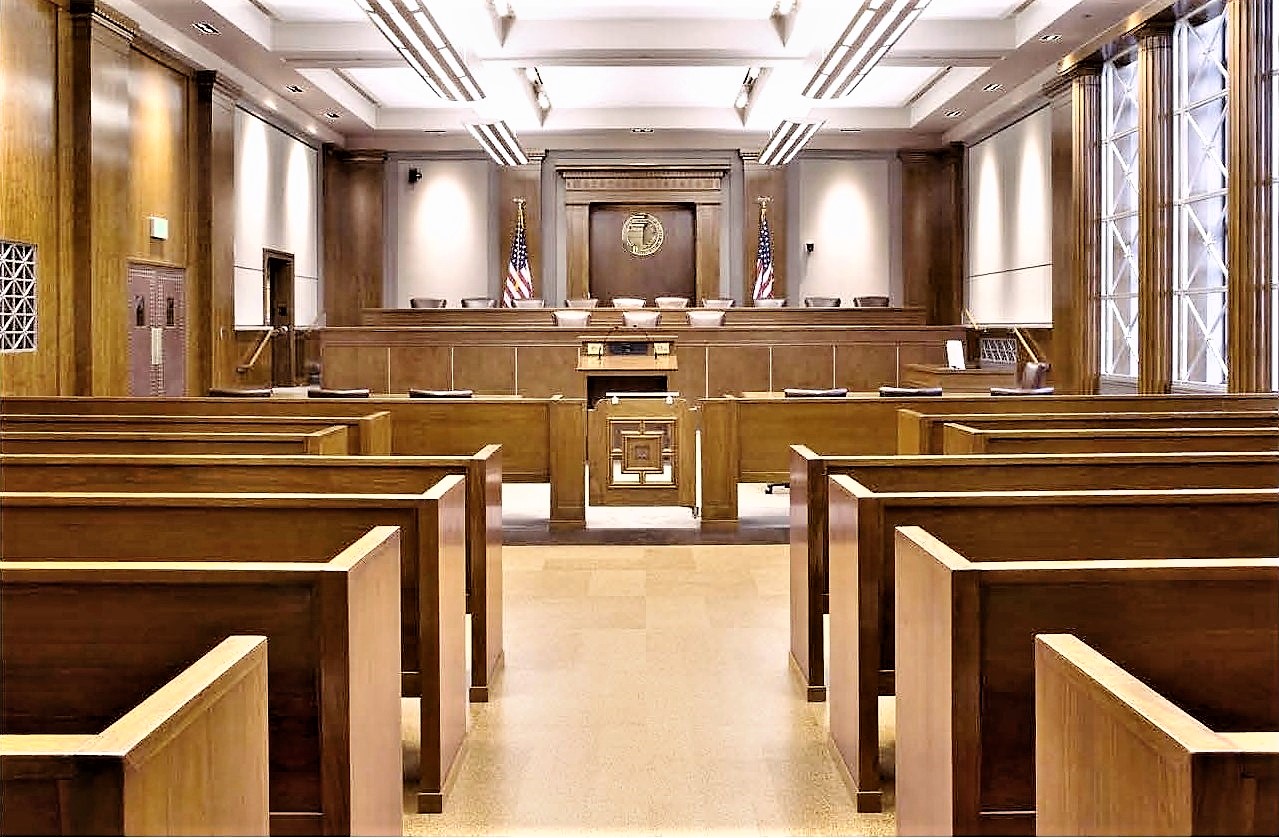In my last blog concerning courthouse accessibility, I discussed the challenge of reconciling accessibility requirements with historic preservation objectives at the main courthouse entrance. Today, I’m approaching a topic that is an even greater challenge for court planners and architects: the reconciliation of courtroom accessibility requirements with historic preservation objectives and space constraints in the courtroom. My comments will focus primarily on wheelchair access due to the space and design implications for courtrooms.
The design criteria for the alteration and renovation of existing facilities covered by the Americans with Disabilities Act Accessibility Guidelines (ADAAG) translate into the requirement that all courtroom areas must be either inherently accessible or directly adaptable for accessibility. This means that access to all of the normal regions raised in the courtroom, including the judge’s bench, witness stand, and jury box, must be accessible by either a permanent ramp or a lift. Further, when ramps or lifts are provided, they must be an integral part of the architecture of the courtroom.
Here are some suggestions for meeting these requirements:
The Judge’s Bench
Unobtrusive access for people with disabilities to the judge’s bench in an existing courtroom is rarely achievable without some degree of reconstruction. The least disruptive options for accommodating a judge with disabilities are the construction of a ramp or mechanical lift within the tight corridor adjacent to the courtroom entry behind the bench. Other options include the installation of a mechanical lift to the side of or within the bench. However, the configuration of such ramps or lifts must be able to fit within the limitations of the existing space.
Witness Box and Deputy Courtroom Accessibility
Providing access to the witness box and courtroom deputy (could be law clerk, etc.) station may be similarly difficult to achieve in existing courtrooms, especially if they are less than full size. Where space limitations or historic preservation requirements preclude the installation of a ramp to these locations, a mechanical lift added to the witness box or courtroom deputy station may be the only acceptable solution.
space limitations or historic preservation requirements preclude the installation of a ramp to these locations, a mechanical lift added to the witness box or courtroom deputy station may be the only acceptable solution.
A well-designed example of the use of a mechanical lift was observed in this California courtroom. Without space for a ramp, the witness stand floor was constructed to be a platform that could be lowered for ADAAG-compliant access and raised to the level of the judge’s bench to allow the witness appropriate sightlines during the proceedings. The lower stair tread was designed to be removable when the platform was lowered to the main floor level of the courtroom.
Jury Box
Access to the jury box can be most readily accomplished by adding a hinged portion of the enclosure to create a wider opening for a wheelchair. A removable chair can accompany this modification to provide space for the wheelchair. If the area is not on the floor level for courtroom accessibility, a ramp must be provided.
Court Reporter Station, Lecterns, and Counsel Tables
The least disruptive solution for achieving ADAAG-compliant access to the court reporter/recorder station entails placing the station on the floor level for direct wheelchair access and courtroom accessibility. Access to the lectern for people with disabilities can be provided with a platform that lowers mechanically to meet the height requirement of a speaker in a wheelchair. The pulpit must be designed to be usable for a person confined to a wheelchair; simple height adjustment of the work surface is often insufficient. Counsel tables should also be fitted with a visually compatible section that accommodates the arm height of a wheelchair.
Spectator Seating Area
The design of the spectator seating area for courtroom accessibility must also consider visitors with disabilities. Ramps or lifts are usually optional since the spectator seating area is normally on the main courtroom floor level. However, the spectator seating area and other areas of the courtroom could be served by an infrared wireless assisted-listening system (ALS) with emitters placed at opposite corners of the courtroom for optimum coverage. Due to their size, they require careful design attention to integrate them with the existing architectural features of the courtroom.
In my next post concerning courthouse accessibility, I will provide an overview of accessibility in the security screening areas of the courthouse.
_____________________________________________________________
Click the image to download our Courtrooms and Chambers: Conceptual Design and Analysis eBook.





.jpg)
.jpg)
.jpg)
.jpg)
.jpg)
.jpg)


.jpg)
.jpg)
-1.jpg)
.jpg)
.jpg)
.jpg)
.jpg)
.jpg)

